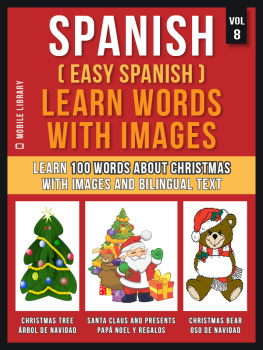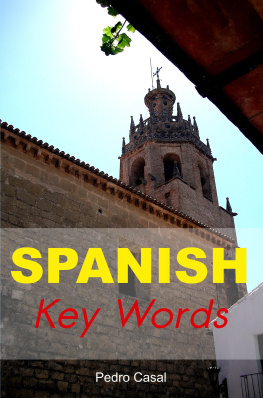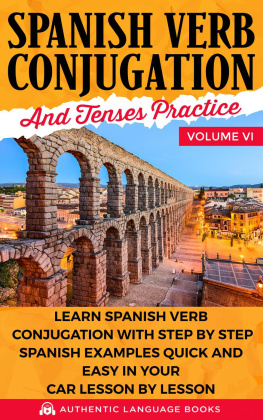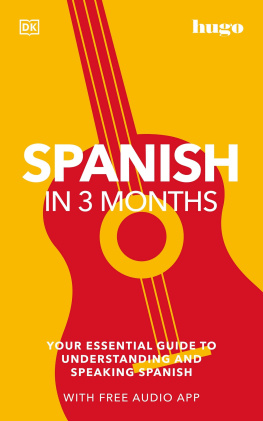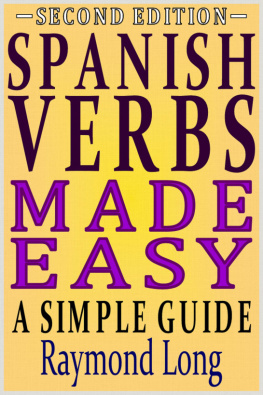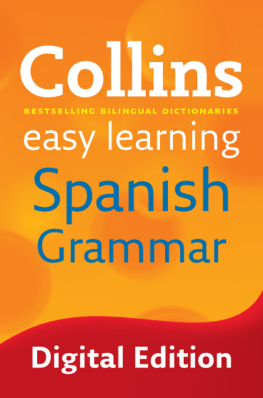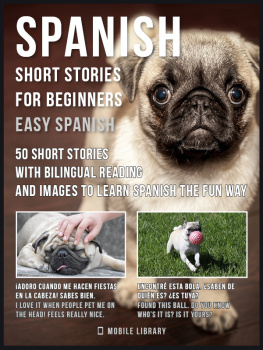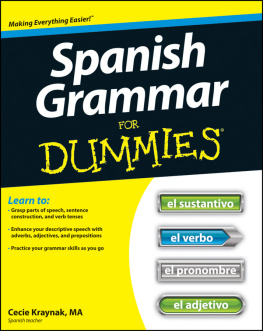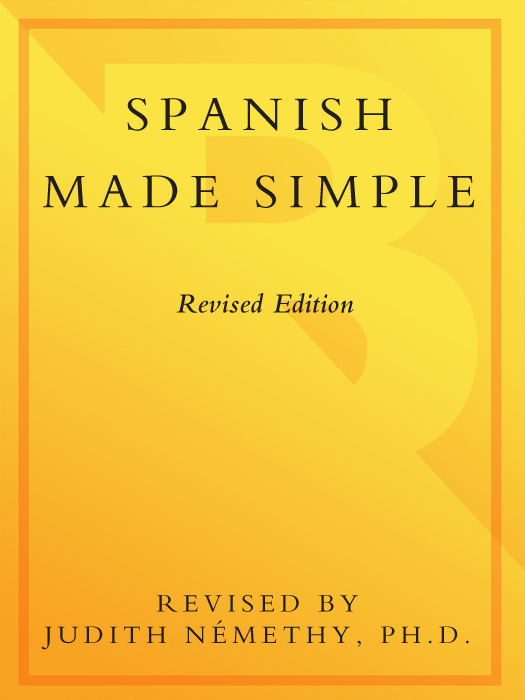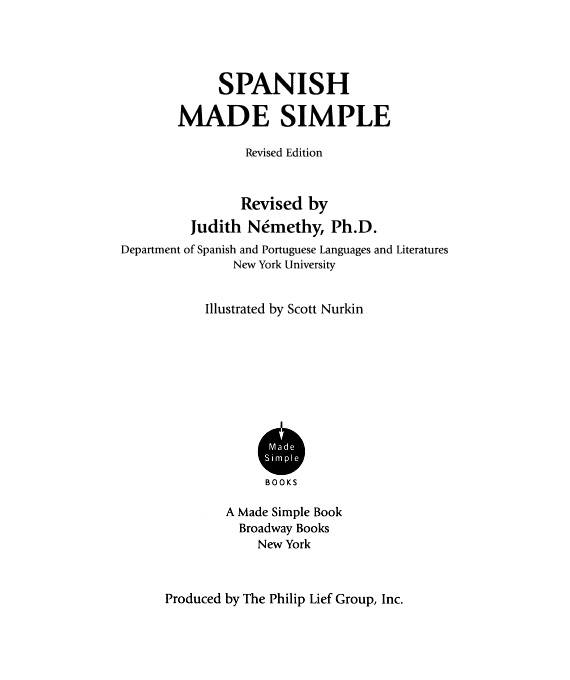.
.
.
INTRODUCTION
BIENVENIDOS!
Welcome!
Do you wish to acquire enough knowledge of Spanish to meet your needs as tourist or business traveler in a Spanish-speaking country? Do you wish to be able to read simple Spanish texts? Do you wish to build a foundation in the Spanish language for further study in secondary school or college? SPANISH MADE SIMPLE meets the needs of the self-learner, whether the aim is the practical conversation and comprehension ability needed by a tourist or businessperson, or the wish to read in Spanish. It can also serve as an excellent refresher course for those who already have had some study of the language.
SPANISH MADE SIMPLE will enable you to attain your goal. The essential grammatical facts of Spanish grow naturally out of conversation and reading texts. The concepts are clearly explained. Nonessentials are omitted. The illustrative drills and exercises will help you gain a practical knowledge of the elements of Spanish and lay the foundation for a more advanced study of the language.
SPANISH MADE SIMPLE has several features that will help you to learn. Each chapter begins with a parallel, bilingual text, which eliminates the burdensome and time-consuming need to look up words in the dictionary. Each chapter also includes dialogues that deal with common topics, vocabulary building exercises, and Spanish practice questions. To reinforce your comprehension, there are examples provided for selected exercises. Every few chapters, youll find a review chapter, which provides easy reference to the terms and rules covered so far. This will help you to gauge your progress as you go.
Important words, expressions, and cultural facts are presented through a series of conversations between a Mexican teacher, Mr. Lpez, and his pupil, Mr. Adams. Mr. Adams is a businessman from New York who is about to take a trip to Latin America. He hopes to learn enough Spanish to meet his needs as both a tourist and a business traveler in a Spanish-speaking country. As you follow him through his lessons, you will also be learning to speak, read, and understand Spanish.
In the revision of this classic and popular Spanish textbook, I have removed outdated or archaic words and phrases and added idiomatic expressions. I also included new words and phrases that correspond with advancements in technology, and updated words and grammatical forms to follow new rules of spelling and written accents. I updated some of the statistical information and modernized the content of several readings. I also added some explanations of the grammatical rules, to help you better understand the structure of Spanish.
This new edition also features illustrations that. highlight some of the expressions and grammatical rules covered in the chapters in which they appear. They will help you apply the information to a visual and tangible situation. For quick reference, youll find a Spanish to English dictionary and an English to Spanish dictionary located at the back of the book. There is also an answer key, so you can check your answers and track your progress.
The most important advice I can offer is this: practice aloud, memorize the new words and expressions of each chapter, write out the exercises, and you will enjoy the process of learning a new language!
Dr. Judith Nmethy is the Director of Spanish Language Studies, Department of Spanish and Portuguese Languages and Literatures at New York University.
CHAPTER 1
CAPTULO 1 (UNO)
MEET THE SPANISH LANGUAGE
1. SPANISH IS NOT A COMPLETE STRANGER.
On your introduction to the Spanish language you will be glad to learn that you already know or can guess the meaning of many Spanish words.
First of all, there are those words that are spelled alike and have the same meaning in Spanish and English. For example:
| actor | color | doctor | gratis | canal | conductor | hospital |
| hotel | error | piano | animal | auto | principal | director |
Then there are many Spanish words whose spelling is only a bit different from like words in English, and whose meaning is easily recognized. Thus:
| aire | arte | centro | barbero | mula | profesor | conversacin |
| air | art | center | barber | mule | professor | conversation |
Many Spanish verbs differ from corresponding English verbs only in the matter of ending. Thus:
| declarar | adorar | admirar | usar | informar | defender | dividir |
| declare | adore | admire | use | inform | defend | divide |
English has borrowed words directly from Spanish with or without changes in spelling. Thus:
| adobe | rodeo | fiesta | lazo | patio | tomate | siesta | rancho |
| adobe | rodeo | fiesta | lasso | patio | tomato | siesta | ranch |
Spanish has borrowed words directly from English. This is especially true in the field of sports. You will recognize these words even in their strange spellings.
| rosbif | mitin | pudn | tenis | bisbol | ftbol | bsquetbol |
| roast beef | meeting | pudding | tennis | baseball | football | basketball |
The similarities between the Spanish and English vocabularies will be a great help to you in learning Spanish. However, you must bear in mind that words of the same or similar spelling in the two languages are pronounced differently. Also you must be on the lookout for some Spanish words that are alike or similar in spelling to English words, but different in meaning.
2. SPANISH IS NOT DIFFICULT TO PRONOUNCE OR SPELL.
Spanish is a phonetic language. This means that words are spelled as they are pronounced. There are no silent letters in Spanish except h, which is always silent, and u, which is silent under certain circumstances. How much simpler this is than English, where such words as height, knight, cough, rough, rogue, weigh, dough


